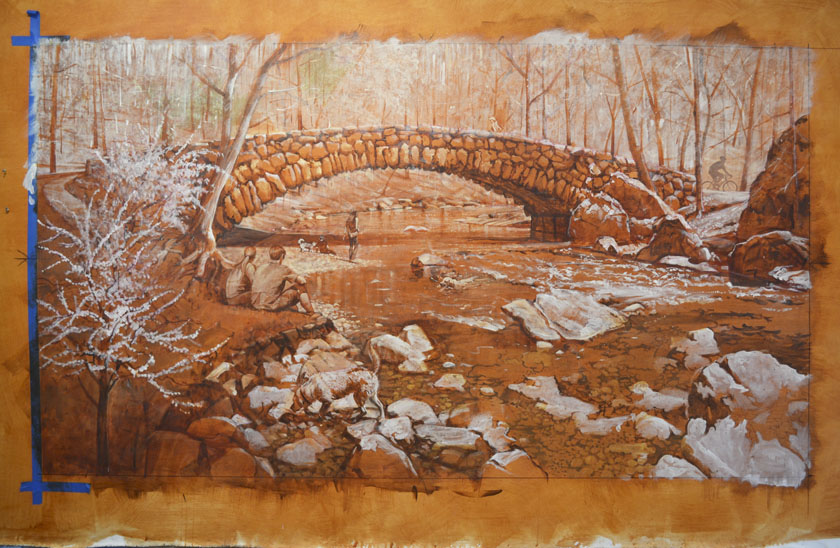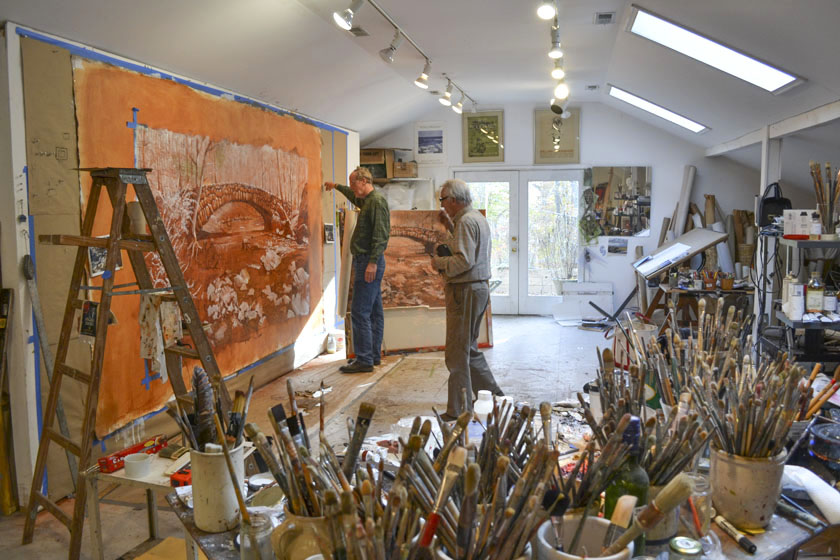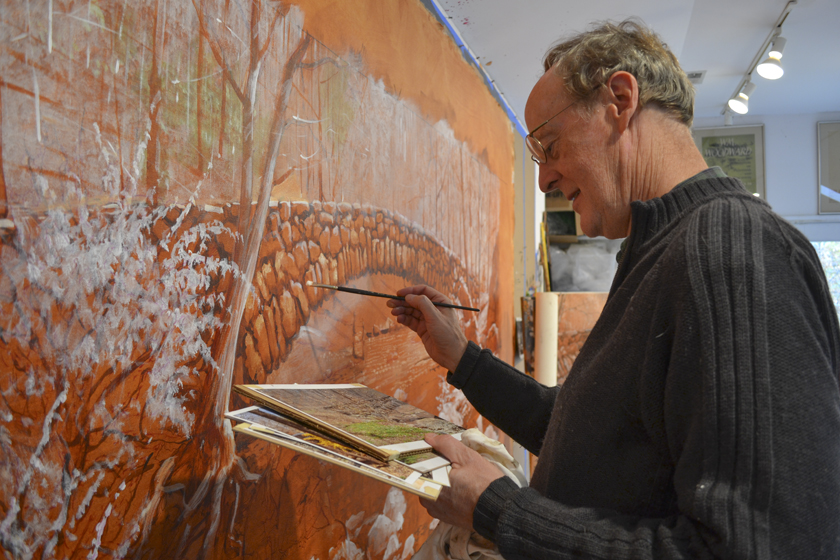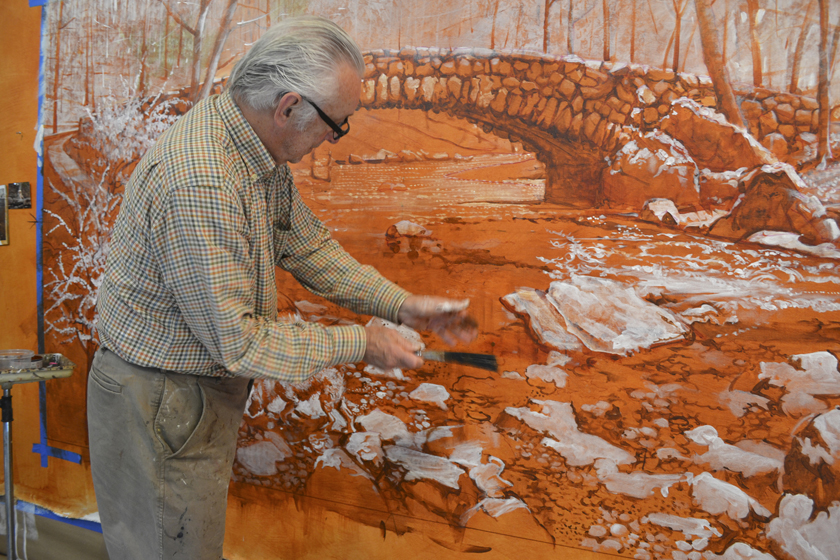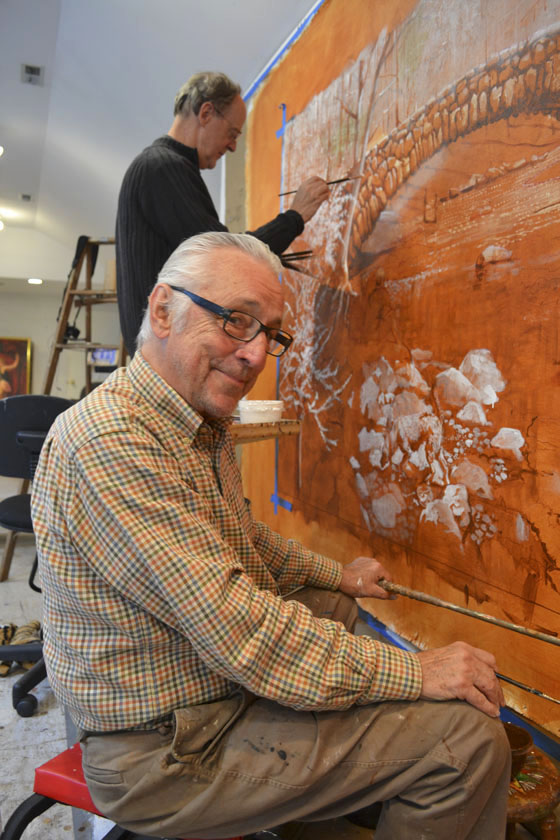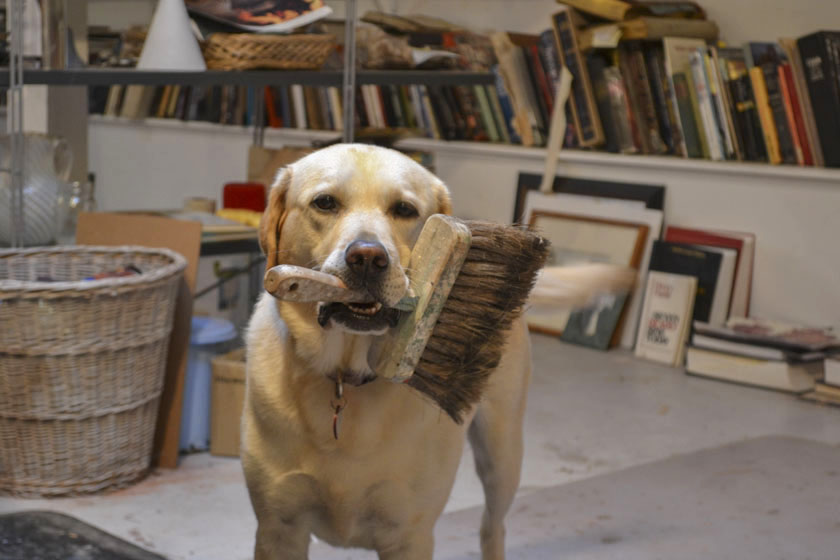Mural Watch: Step Two
Once the B.F. Saul Company approved the preliminary drawing, it was “all systems go” to start the mural.
In the tradition of the Renaissance, Brad and William methodically began the step-by-step process of preparing the canvas and transforming the drawing into the underpainting for the mural.
First, Brad and William primed the linen canvas with three layers of gesso, sanding the canvas between each layer to ensure a smooth surface. Then they stapled the canvas to the studio wall.
Next, they applied an imprimatura––a transparent wash of burnt sienna––to eliminate the harsh white of the gessoed canvas and allow for the eventual use of white paint for highlights and three dimensional effects.
With the preliminary drawing as their roadmap, Brad and William began to transfer the elements of the composition onto the canvas. They painted a grisaille of the landscape––a monochromatic underpainting in burnt sienna, heightened with white.


